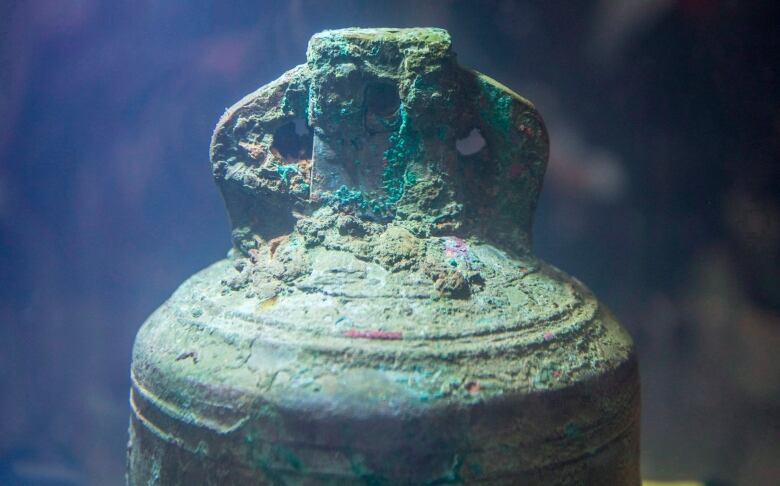Archeologists aim to uncover secrets of Franklin expedition in ship's cabins
'There are thousands upon thousands of artifacts down there'

A Parks Canada archaeology team is boating towards the graves of the Franklin expedition ships, more than 200 kilometres north of the Arctic Circle, hoping to uncover more secrets from the ill-fated mission.
Parks Canada's team of nine underwater archeologists will arrive on site by Friday and spend the next two weeks exploring the wreck of HMS Erebus hoping to find artifacts that might help explain exactly what happened to the crews on the Erebus and HMS Terror during a scientific and exploratory mission that started in 1845.
Jarred Picher, director of archeology and history at Parks Canada, said earlier this year that the underwater work his team will carry out would likely be the highlight of their careers.
"There are thousands upon thousands of artifacts down there," Picher said.
Inuit guides helped Parks Canada archeologists find the Erebus in September 2014 in relatively shallow water off the coast of King William Island. The Terror was found two years later about 100 kilometres away.
Although international law gave ownership of the ships to the United Kingdom, the U.K. agreed more than 20 years ago that Canada would eventually get possession of the vessels if they were ever found. The ownership transfer was completed in April, and Canada jointly holds title to the ships and their remaining contents with the Inuit Heritage Trust.
Sixty-five artifacts already recovered from Erebus — including parts of clothing, boots, plates and the ship's bell — remain British property.
The focus on this particular mission will be to recover artifacts from the Erebus's living quarters, including Franklin's cabin.

Picher said he hopes ship's logs or captain's journals may be hiding inside, preserved well by the Arctic waters. Such documents would be the best opportunity to track the path of the ships and get a sense of what happened to them.
It was long believed the ships got trapped in ice and had to be abandoned, but there are unanswered questions about exactly how the Erebus and Terror ended up in their final resting places, and what happened to the men who crewed them.
Most of the artifacts on the ships will never be removed from the ships. Picher said only artifacts that can help tell the story will be removed.
Anything recovered from the ships will be flown to Parks Canada facilities in the south for preservation, a process that can take years. The cannon discovered on Erebus in 2015 is still undergoing conservation work.
Archeologists also hope to collect images, videos and scans of HMS Terror to help craft plans to physically explore the ship in the future, but that work will depend on weather and ice conditions.
The two shipwrecks are national historic sites that are off-limits to the public. Eventually the plan is to have Inuit Guardians host visitors to the wreck sites to share the Franklin story and Inuit culture.